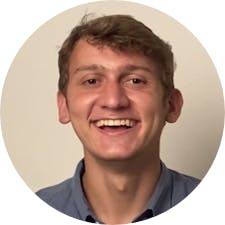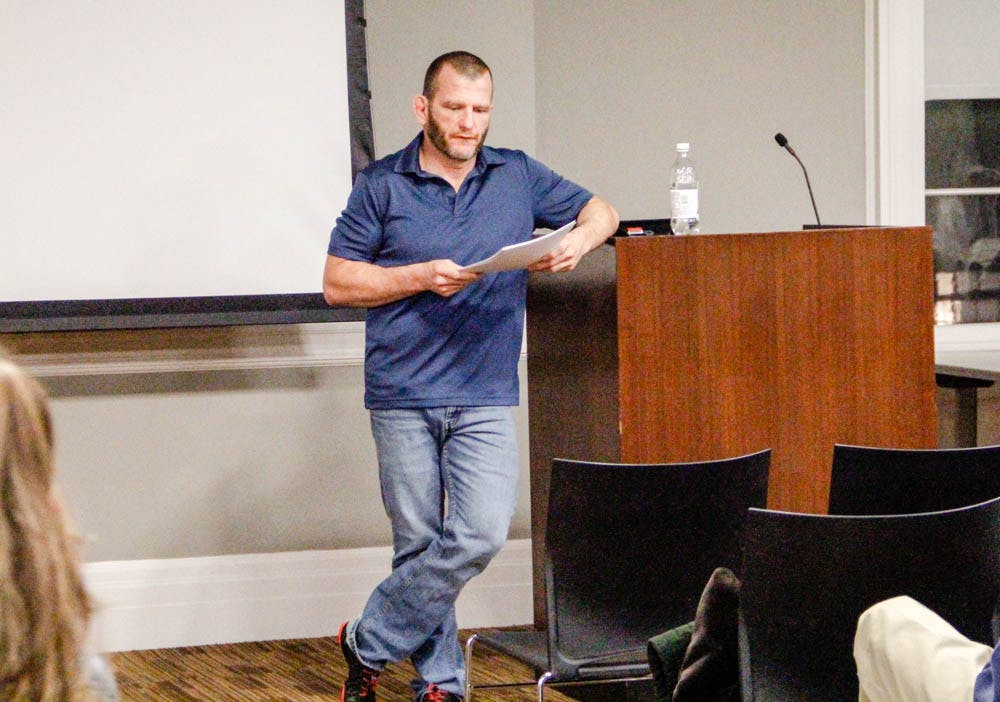Images of the brain are in essence images of the soul, argued Professor James Madden of Benedictine College in an interdisciplinary talk titled “Can You Take a Picture of The Soul?” Monday night.
Madden, who spoke in front of a small crowd of undergraduates, graduates and other community members in the Petteruti Lounge of the Stephen Robert ’62 campus center, described the relationship between neuroscience and religious philosophy and also touched on biology, artificial intelligence and other philosophical constructs during his lecture.
Madden began the discussion by referencing the commonly placed photos of brains in the front of neuroscience textbooks, often accompanied by captions labeling them as human minds. He used this example as a jumping off point to discuss the differences between the mind, the soul and the brain, entities that are often assumed to be synonomous.
Madden defined the mind as being a “collection of mental states,” while he referred to the brain as essentially “just impulses moving along membranes that have nothing to do with the content of mental states.”
He then expanded on the nuances between minds and souls. “There’s more than one true story to be told about the human being and her thinking. Having a human soul is not the very same thing as having a mind. One can have a human soul while failing to have a mind at all,” he said.
Connecting the discussion back to its central question, Madden ultimately concluded that while all photos of a living being capture its soul, philosophers — Aristotle included — have held the belief that the soul is most distinctly located in the brain.
“As neuroscientists become more adept at producing functional neuroimages, they are rendering images of the human soul and giving us insights into our nature,” he said at the close of his lecture.
The idea that non-living beings may have souls, such as artificial intelligence, also came up during the question and answer session following the lecture. Madden did not explicitly deny this possibility.
“If it were self-maintaining, if it had capacities that were divergent, I’m not betting on it, but I won’t rule it out a priori,” he said, adding that the bar for AI or “biological robots” having a soul was high but not impossible to reach.
The University’s chapter of the Thomistic Institute, which aims to promote Catholic thought through the lens of Saint Thomas Aquinas, organized Madden’s talk, which was one of a number of lectures the institute hosted this semester. Madden also lectured at the University’s chapter of the Thomistic Institute in 2017 on a similar subject. Benedictine, where Madden teaches, is a Catholic liberal arts college in Kansas.
Louis Gularte GS, who helped organize Madden’s lecture, said that the Thomistic Institute was looking for “life-relevant ideas” that connected with “scientifically interested undergrads.”
“The soul sounds like this very mysterious thing, but on the Thomistic, Catholic view of the soul, it has the capacity to be more science-friendly than people expect,” Gularte said.
Maria Koenig, a first year student from the Rhode Island School of Design, said that the lecture’s intersectionality attracted her to the event. “It’s a novel concept,” she said. “Neuroscience is data-based and factual, while philosophy is very faith-based.”
Gularte also praised Madden’s lecturing style for its accessibility. “He likes answering questions, he doesn’t talk down to people. He’s ready to unroll his ideas,” he said.
Madden said that his work interacts with other disciplines, specifically neuroscience and psychology, on a daily basis. He hopes that the Catholic Church will begin to factor the world of science further into its vernacular.
“Catholicism is this idea that faith and reason are compatible,” he said. “The science most relevant to claims that we make on behalf of the faith on human nature is neuroscience.”
To Catholic neuroscience concentrators concerned about the theology of their study, Madden had simple advice: be patient.
Madden told students: “You don’t have to sort all this out today. First and foremost, be a good neuroscientist. Then, start reading the tradition.”

Will Kubzansky was the 133rd editor-in-chief and president of the Brown Daily Herald. Previously, he served as a University News editor overseeing the admission & financial aid and staff & student labor beats. In his free time, he plays the guitar and soccer — both poorly.





